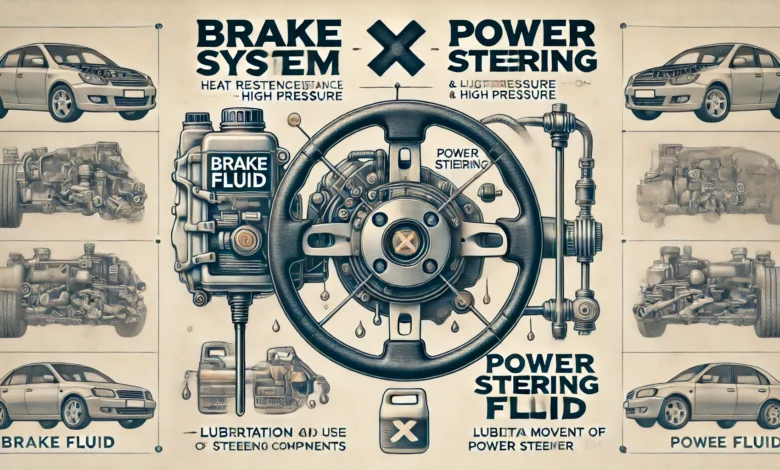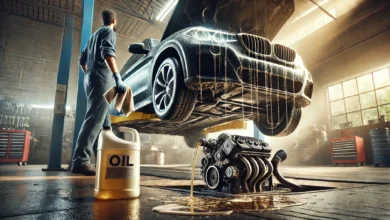Can You Put Brake Fluid in Power Steering? – Important Facts & Risks

When it comes to car maintenance, understanding the difference between various automotive fluids is crucial for the health of your vehicle. A question that comes up occasionally is, “Can you put brake fluid in power steering?” At first glance, both systems may seem somewhat related, but the fluids they use are very different. Mixing the two can lead to serious issues, as they are designed to work within specific systems that depend on their unique prope
Let’s explore why this combination is problematic and what you should do instead.
Understanding Brake Fluid vs. Power Steering Fluid
Both brake fluid and power steering fluid are hydraulic fluids, but they serve entirely different purposes within a vehicle. Brake fluid is designed to withstand high temperatures and pressure, transferring force to the brakes. It’s typically glycol-based (in most cars, DOT 3 or DOT 4), making it more heat-resistant. On the other hand, power steering fluid is a lubricant that reduces friction in the power steering pump, providing a smooth steering experience.
One of the most crucial differences is that brake fluid can absorb moisture from the atmosphere, which could lead to corrosion in parts of the power steering system. Putting brake fluid into the power steering system can cause seals to swell, leading to leakage and complete failure of the system.
Why You Should Avoid Mixing Fluids
The key reason you shouldn’t put brake fluid in your power steering system lies in their composition. Power steering fluid typically contains detergents and additives designed to lubricate moving parts, while brake fluid doesn’t. The two fluids have different viscosity, chemical makeup, and temperature tolerances.
Brake fluid lacks the lubricating properties that are essential for a functioning power steering system. If used in a power steering pump, the brake fluid could cause it to overheat and damage the pump and other components like the steering rack. Additionally, brake fluid can strip away the special rubber seals in the power steering system, causing a loss of fluid and a potential fai
Real-World Scenarios from Drivers
Many users on car forums and review sites have shared their experiences with accidentally adding brake fluid to the power steering system. On a popular car forum, one user mentioned that their mechanic told them to flush the power steering system immediately after brake fluid was added. The steering had become stiff, and the pump was making loud noises. After flushing the system, the mechanic warned that the damage could have been irreversible if the fluid had stayed in longer.
Another review noted that some drivers were unaware of the severe consequences until they experienced leaks or complete failure in their power steering. These real-world examples from car owners underscore the importance of using the right fluid in your vehicle. As one mechanic on a popular automotive site pointed out, if brake fluid is accidentally used, a full system flush is often required, and in some cases, parts may need to be replaced.
What to Do If You’ve Already Mixed the Fluids
If you’ve already added brake fluid to the power steering reservoir, immediate action is necessary to prevent severe damage. Here’s what you should do:
- Don’t start the vehicle. Starting the engine will circulate the fluid, increasing the chances of damaging the power steering system.
- Drain the reservoir. You can use a turkey baster or similar tool to remove as much fluid as possible from the reservoir.
- Flush the system. It’s highly recommended to take the car to a mechanic, where the power steering system can be flushed thoroughly to remove any traces of brake fluid.
- Replace damaged components. In severe cases, replacing seals, the pump, or even the steering rack may be necessary.
Conclusion
So, can you put brake fluid in power steering? The clear answer is no. These two fluids are not interchangeable, and using brake fluid in your power steering system can lead to significant damage and expensive repairs. Always ensure that you are using the correct fluid for each system in your vehicle.










